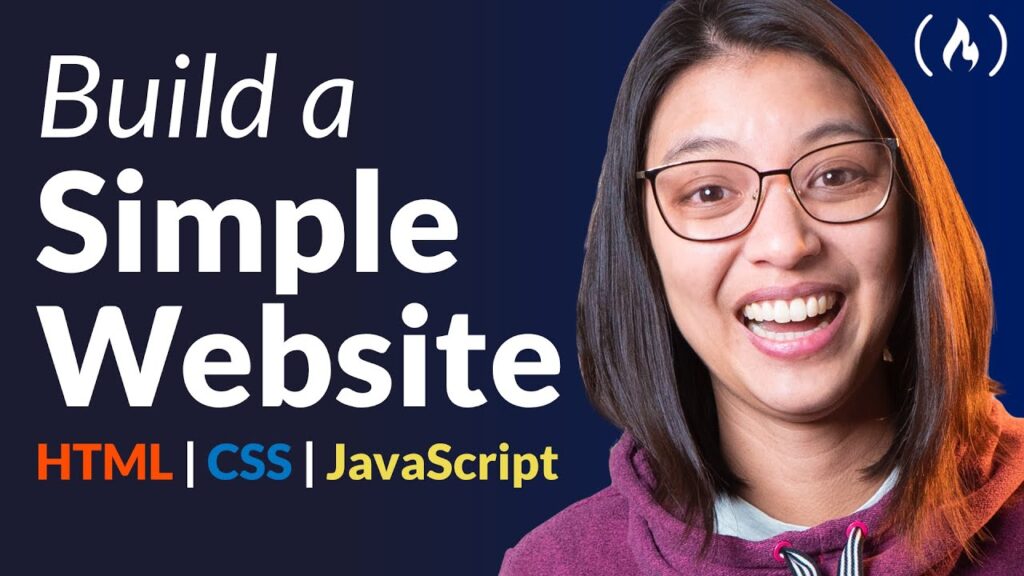[ad_1]
How to Build a Simple Website from Scratch Using JavaScript: A Comprehensive Guide
Creating a website from scratch might seem like an intimidating task, but with the right guidance, it’s a straightforward and rewarding process. This guide will walk you through the steps to build a simple website using JavaScript. Whether you’re a freelancer, a marketing agency, a beginner, or an expert looking to expand your skill set, this tutorial will help you achieve your business objectives.
Step 1: Setting Up Your Development Environment
First and foremost, ensure you have a reliable development environment. You’ll need a code editor such as Visual Studio Code, Sublime Text, or Atom. Additionally, you’ll require a modern web browser like Google Chrome or Mozilla Firefox for testing.
- Download and install Visual Studio Code from the official website.
- Ensure you have the latest version of Google Chrome or Mozilla Firefox installed.
Step 2: Basic Structure of Your Website
To begin, you need to set up the basic structure of your website. Create a new directory (folder) on your computer where you’ll store your website files. Inside this directory, create three files:
index.htmlstyles.cssscript.js
These files will hold the HTML, CSS, and JavaScript code for your website, respectively.
HTML: Setting Up Your index.html
Your HTML file serves as the skeleton of your website. Open index.html in your code editor and add the following basic structure:
<!DOCTYPE html>
<html lang="en">
<head>
<meta charset="UTF-8">
<meta name="viewport" content="width=device-width, initial-scale=1.0">
<title>Simple Website</title>
<link rel="stylesheet" href="styles.css">
</head>
<body>
<header>
<h1>Welcome to My Simple Website</h1>
<nav>
<ul>
<li><a href="#">Home</a></li>
<li><a href="#">About</a></li>
<li><a href="#">Contact</a></li>
</ul>
</nav>
</header>
<main>
<section>
<h2>About This Website</h2>
<p>This is a simple website created using JavaScript.</p>
</section>
</main>
<footer>
<p>© 2023 Simple Website. All rights reserved.</p>
</footer>
<script src="script.js"></script>
</body>
</html>This code provides a simple structure with a header, navigation menu, main section, and footer.
Step 3: Styling Your Website with CSS
CSS (Cascading Style Sheets) is used to style your HTML elements. Open styles.css and add the following styles:
body {
font-family: Arial, sans-serif;
margin: 0;
padding: 0;
background-color: #f9f9f9;
}
header {
background-color: #4CAF50;
color: white;
padding: 1rem;
text-align: center;
}
nav ul {
list-style-type: none;
padding: 0;
}
nav li {
display: inline;
margin: 0 1rem;
}
nav a {
color: white;
text-decoration: none;
}
main {
padding: 2rem;
}
footer {
background-color: #333;
color: white;
text-align: center;
padding: 1rem;
position: fixed;
bottom: 0;
width: 100%;
}These styles will give your website a clean and professional look.
Step 4: Adding Interactivity with JavaScript
JavaScript is a powerful tool for adding interactivity to your website. Open script.js and add the following code:
document.addEventListener('DOMContentLoaded', function() {
const navLinks = document.querySelectorAll('nav a');
navLinks.forEach(link => {
link.addEventListener('click', function(event) {
event.preventDefault();
alert('You clicked a navigation link!');
});
});
});This script adds an event listener that shows an alert message when a navigation link is clicked.
Step 5: Enhancing Your Website with Modern JavaScript Features
To take your website to the next level, let’s use some modern JavaScript features such as ES6 syntax and fetch API to add a dynamic message from a remote server.
Fetching Data from an API
Suppose you want to fetch a quote from a public API and display it on your website. Modify your script.js as follows:
document.addEventListener('DOMContentLoaded', () => {
const navLinks = document.querySelectorAll('nav a');
const quoteSection = document.createElement('section');
quoteSection.innerHTML = '<h2>Random Quote</h2><p>Loading...</p>';
document.querySelector('main').appendChild(quoteSection);
navLinks.forEach(link => {
link.addEventListener('click', event => {
event.preventDefault();
alert('You clicked a navigation link!');
});
});
fetch('https://api.quotable.io/random')
.then(response => response.json())
.then(data => {
quoteSection.querySelector('p').innerText = data.content;
})
.catch(error => {
console.error('Error fetching quote:', error);
quoteSection.querySelector('p').innerText = 'Failed to load quote.';
});
});This script fetches a random quote from the Quotable API and displays it on the website.
Step 6: Making Your Website Responsive
To ensure your website looks good on various devices, add the following responsive design styles to your styles.css:
@media (max-width: 600px) {
nav li {
display: block;
text-align: center;
}
header, footer {
text-align: center;
}
}These styles will make your website’s navigation and content adapt to smaller screens.
Step 7: Deploying Your Website
Finally, your website is ready to go live! You can deploy your website using platforms such as GitHub Pages, Netlify, or Vercel.
Deploying with GitHub Pages
-
Create a GitHub Repository:
- Go to your GitHub account and create a new repository.
- Name your repository, and follow the instructions to push your local files to GitHub.
- Enable GitHub Pages:
- Navigate to the "Settings" tab of your repository.
- Scroll down to the "GitHub Pages" section.
- Choose the main branch as the source and save.
- Your website will be live at
https://your-username.github.io/your-repository-name.
Deploying your website ensures that it is accessible to a broad audience and helps you achieve your business goals by providing a professional online presence.
Conclusion
Building a simple website from scratch using JavaScript is an excellent way to gain valuable skills that can help you in various fields such as marketing, finance, and technology. By following this guide, you’ve learned how to set up a development environment, structure your HTML, style your website using CSS, add interactivity with JavaScript, fetch data from an API, implement responsive design, and deploy your website.
These foundational skills can be further expanded upon, opening doors to more complex projects and career opportunities. Whether you’re a freelancer looking to enhance your portfolio, a marketing agency aiming to offer more comprehensive services, or a beginner seeking to enter the world of web development, this guide is your stepping stone to success.
Happy coding!
[ad_2]


